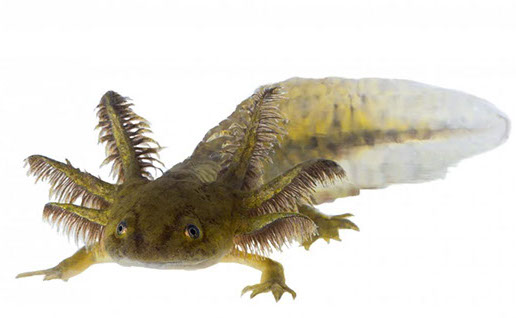New Skin in the Game™
Meet the Axolotl
SCIENCE
Problem
Even with the advances in engineered skin, biological skin, and extensive resources allocated to research, a large unmet clinical need remains, and currently, no technology has been developed that satisfies the lofty goal of scar free healing.1 In the United States, chronic wounds affect more than 6.5 million people annually at a cost of more than $25 billion.2 An additional 12 million lacerations needed treatment in each year American emergency rooms and another ~480,000 burns needed treatment of which ~50,000 required hospitalization.4,5 Worldwide, the need is even more pressing. Each year, there are more than 250 million surgical incisions,4 and an additional 11 million burns that require treatment.5 Additionally, as the population continues to age, disabling diseases and injuries will continue to rise, increasing the number of patients that are undergoing soft tissue repair surgeries, which often require skin substitutes and replacement scaffolds to support damaged tissue and close wounds.3
Axolotl
The axolotl has innate attributes for scar free healing of skin wounds, can regenerate limbs and organs (including heart, spinal cord, and brain), and is one of only a few vertebrate animals capable of regeneration throughout its life (reviewed in depth in1,13–15). The axolotl is the oldest, self-sustaining laboratory animal having been bred in captivity and studied for over 150 years.16 This animal has regenerative capabilities that remodel, regrow, and restore damaged tissue with results superior than those seen in human tissue repair.
Neoteny
is defined as “the retention of juvenile characteristics in a (sexually) mature organism”.17 Humans, like nearly all mammals, lose the ability to heal scar free in the 2nd trimester of fetal devolvement18 (current amnion and chorion products are harvested from full-term pregnancies). Frogs lose the ability to regenerate limbs during metamorphosis to the terrestrial form.19 In contrast, axolotls retain the ability to regenerate limbs and heal in a scar free manner in the juvenile and adult (sexually mature) form.1,15,20
The processes for axolotl regeneration flows through the same four general phases seen in human wound healing; haemostasis, inflammation, proliferation, and tissue remodeling, albeit some with different timing.20,26 In response to a full thickness excisional (FTE) wound, axolotls have lower haemostasis and inflammatory responses, rapid re-epithelialization, but a slower deposition of new extracellular matrix (ECM) as compared to humans.20 Unlike human wound healing of an FTE wound where the provisional matrix and ECM are formed quickly, axolotls delay formation of new ECM for as many as 10 days after re-epithelialization.20
Hemostasis
Inflammation

Proliferation
Tissue remodeling

Address
13800 Tech City circle, Ste. 200,
Alachua, FL 32615
Copyright 2019. All Right Reserved / MKT-001 Rev 0 / Designed By SPG


